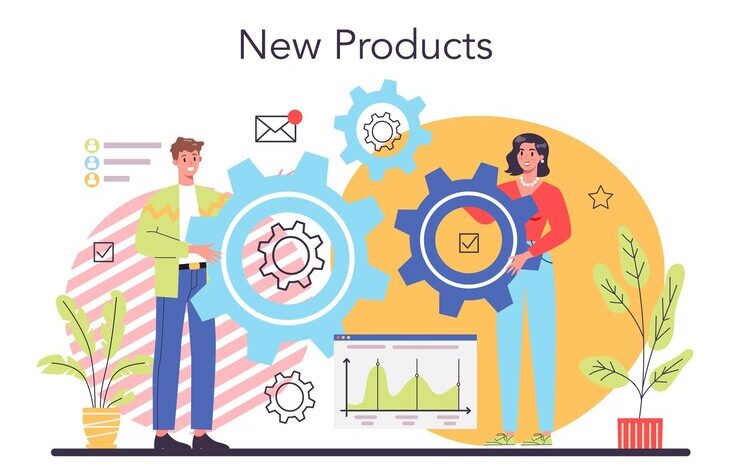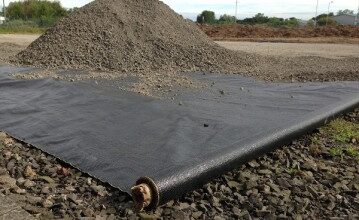Efficiency Illustrated: Real-World Examples of Lean Manufacturing in Action

Imagine a factory floor buzzing with activity, yet there’s no frenzy, no wasted motion. This is the essence of lean manufacturing, a philosophy that prioritizes eliminating waste while maximizing value for the customer. But how does this translate into real-world scenarios? Let’s delve into some compelling examples of lean manufacturing in action.
Streamlining the Assembly Line: A Toyota Triumph
One of the most iconic examples of lean manufacturing comes from Toyota. In the 1950s, the Japanese automaker faced fierce competition from American car companies. To survive, they needed a more efficient production system. Enter the Toyota Production System (TPS), a cornerstone of lean manufacturing. TPS implemented several vital principles, including:
- Just-in-time (JIT) inventory: Parts arrive precisely when needed, eliminating the need for excess storage and reducing waste.
- Kanban system: A visual communication tool that signals when and how many parts are needed at each assembly station.
- Kaizen: The philosophy of continuous improvement, encouraging every employee to identify and eliminate inefficiencies.
The results were astounding. Toyota reduced production lead times, improved quality, and lowered costs. This success story continues to inspire companies worldwide to adopt lean principles.
From Shipyards to Software: Boeing’s Lean Transformation
Lean manufacturing isn’t limited to traditional manufacturing industries. Take Boeing, a leader in aerospace engineering. With rising costs and project delays, Boeing implemented lean principles in their supply chain and production processes. They focused on:
- Standardizing work processes: Creating consistent workflows across different teams and locations.
- Eliminating waste in material handling: Streamlining how materials are transported and stored within factories.
- Empowering employees to identify and solve problems: Fostering a culture of continuous improvement at all levels.
Boeing’s lean efforts resulted in significant cost reductions, faster production times, and improved product quality.
Beyond Manufacturing: Lean Principles in Action at AmrepInspect
Lean principles aren’t restricted to physical products. AmrepInspect, a company specializing in non-destructive testing (NDT) services, demonstrates how lean can be applied in the service industry. They implemented lean by:
- Identifying value for the customer: Focusing on delivering timely and accurate NDT inspections that ensure the safety and reliability of their client’s assets.
- We are eliminating waste in scheduling and reporting, Streamlining the process of assigning inspectors, scheduling inspections, and delivering reports.
- Using visual tools to track progress: Implementing Kanban boards to monitor ongoing projects and identify potential bottlenecks.
By adopting lean practices, AmrepInspect has improved its service delivery speed, reduced costs, and enhanced customer satisfaction.
Embracing Lean: A Guide to Getting Started
Are you intrigued by the potential of lean manufacturing but still trying to figure out where to begin? Here’s a roadmap to initiate your lean journey:
- Identify Your Value Stream: Pinpoint the steps in delivering your product or service to the customer. This value stream includes everything from raw materials to the final delivery.
- Recognize and Eliminate Waste: Analyze each step in your value stream and identify areas that generate waste. This waste can take many forms, such as excess inventory, unnecessary movement, or waiting times.
- Focus on Continuous Improvement: Embrace kaizen, the core tenet of lean, and empower your employees to suggest improvements. Create a culture where everyone feels comfortable identifying and proposing solutions to eliminate waste.
- Implement Visual Tools: Visualize your workflow using Kanban boards or flowcharts. This transparency helps identify bottlenecks and streamline processes.
- Start Small and Scale Up: Only attempt to overhaul your entire operation simultaneously. Begin by implementing lean principles in a specific area and gradually expand once you’ve witnessed the positive impact.
Remember, lean manufacturing is an ongoing process, not a one-time fix. By continuously evaluating your workflows and seeking improvements, you can unlock the true potential of lean and achieve lasting success.
Additional Tips for Your Lean Journey
- Invest in Employee Training: Equip your workforce with the knowledge and skills to implement lean principles effectively.
- Seek Expert Guidance: Consider consulting with lean manufacturing specialists who can provide tailored advice and support.
- Measure Your Results: Track critical metrics such as lead times, costs, and quality to quantify the impact of your lean initiatives.
- Celebrate Successes: Recognize and reward employees who contribute to lean improvements, fostering a culture of continuous improvement.
Following these steps and embracing a lean mindset can transform your organization and significantly improve efficiency, quality, and customer satisfaction.
Conclusion
Lean manufacturing isn’t just a set of tools; it’s a philosophy that empowers companies to achieve remarkable results. As AmrepInspect exemplifies, lean principles can be applied across industries, fostering a culture of continuous improvement and propelling businesses toward long-term success. AmrepInspect: Why wait? Start your lean journey today and unlock the potential for a more efficient and thriving future.
FAQs
-
What is the benefit of lean manufacturing?
Lean manufacturing reduces waste, improves quality, and lowers costs, ultimately increasing customer satisfaction.
-
Can any company adopt lean principles?
Yes! Lean principles are adaptable and can be applied across various industries, from manufacturing to service providers. AmrepInspect.



